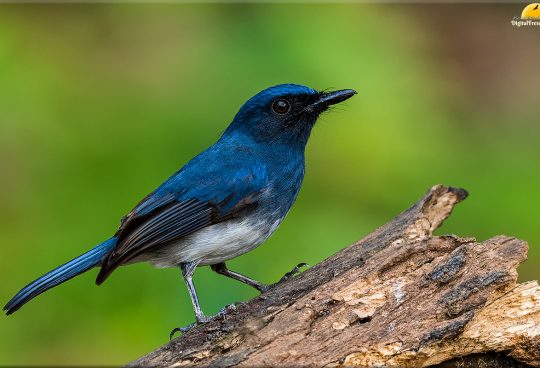The great kiskadee (Pitangus sulphuratus) is a passerine bird in the tyrant flycatcher family Tyrannidae. It is the only member of the genus Pitangus.
It breeds in open woodland with some tall trees, including cultivation and around human habitation, mainly found in Belize, and from the Lower Rio Grande Valley in southern Texas and northern Mexico south to Argentina and Uruguay, but also it occurs all over Venezuela and Brazil (especially the central and south-southeastern regions), Paraguay and central Argentina, the Guyana coastline, and on Trinidad. It was introduced to Bermuda in 1957, and to Tobago in about 1970. The adult great kiskadee is one of the largest of the tyrant flycatchers. It is 25 to 28 cm (9.8 to 11.0 in) in length and weighs 53 to 71.5 g (1.87 to 2.52 oz). The head is black with a strong white supercilium and a concealed yellow crown stripe. The upperparts are brown, and the wings and tail are brown with usually strong rufous fringes. The bill is short, thick, and black in color. The similar boat-billed flycatcher (Megarynchus pitangua) has a more massive black bill, an olive-brown back and very little rufous in the tail and wings. A few other tyrant flycatchers — the social flycatcher (Myiozetetes similis), for example — share a similar color pattern, but these species are markedly smaller.
This alert and aggressive bird has a strong and maneuverable flight, which it uses to good effect when it feels annoyed by raptors. Even much larger birds are attacked by the great kiskadee, usually by diving down or zooming straight at them while they are in mid-air. Harsh calls are also often given during these attacks, alerting all potential prey in the area of the predator’s presence. If not very hungry, any raptor subject to a great kiskadee’s mobbing behavior is likely to leave, as it is well-nigh impossible to make a good catch when subject to the tyrant flycatcher’s unwelcome attention. In general, avian predators are liable to steer clear of an alert great kiskadee, lest their hunting success be spoiled, and will hunt the great kiskadee itself – though it is as meaty as a fat thrush – only opportunistically. It is classified as least concern by IUCN.
![]()






Sorry, the comment form is closed at this time.